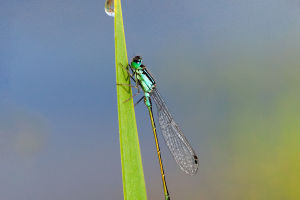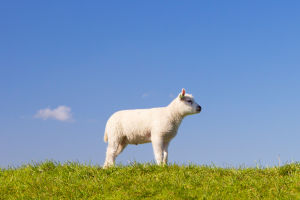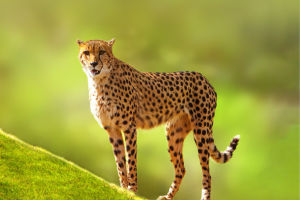Australia is home to some of the most unique and colorful bird species in the world, and among them, the Mulga parrot (Psephotellus varius) stands out as a true gem.
Known for its vibrant plumage and intriguing behavior, this parrot is a delightful sight in the arid regions of Australia.
Let's explore the characteristics, habitat, diet, and conservation status of the Mulga parrot, shedding light on what makes this bird a fascinating subject of study and admiration.
Appearance and Characteristics
The Mulga parrot is a medium-sized parrot, with an average length of about 27-32 centimeters (10.6-12.6 inches) and a wingspan of approximately 32-34 centimeters (12.6-13.4 inches). The male Mulga parrot is particularly striking, adorned in a dazzling array of colors. His plumage includes shades of emerald green, with patches of bright yellow on the belly and a distinct red band across the forehead. The wings are a mix of blue and green, and the tail features a combination of blue and green with a yellow tip. In contrast, the female Mulga parrot is more subdued in color, primarily featuring olive-green plumage with hints of blue and yellow, which serves as excellent camouflage in their natural habitat.
Habitat and Distribution
The Mulga parrot is predominantly found in the arid and semi-arid regions of Australia, particularly in the interior regions of Western Australia, South Australia, and the western parts of New South Wales and Queensland. Their habitat typically consists of mulga woodlands, shrublands, and areas dominated by acacia and eucalyptus trees. These environments provide ample food sources and nesting sites, making them ideal for the Mulga parrot.
The bird’s name, “Mulga,” is derived from the type of vegetation that dominates much of its habitat. The mulga is a type of acacia tree, which is well-adapted to the harsh, dry conditions of the Australian interior. The Mulga parrot’s affinity for these trees is not just in name but also in its behavior and diet.
Diet and Feeding Behavior
Mulga parrots have a diverse diet that primarily consists of seeds, fruits, berries, and flowers. They are particularly fond of the seeds of native grasses and shrubs, which are abundant in their arid habitats. In addition to seeds, they also consume insects, which provide essential proteins, especially during the breeding season.
These parrots are ground foragers, often seen pecking at the ground in search of food. Their strong beaks are well-suited for cracking open tough seed shells, and their sharp claws allow them to deftly handle their food. Mulga parrots are also known to feed on the nectar of certain flowering plants, which supplements their diet with sugars and other nutrients.
Breeding and Reproduction
The breeding season for Mulga parrots typically occurs from August to December, coinciding with the availability of food resources in their environment. During this time, males perform elaborate courtship displays to attract females. These displays often involve fluttering flights, vocalizations, and the presentation of food to the female.
Once a pair has formed, the female takes on the primary responsibility of building the nest, usually in a tree hollow or a crevice in a rocky outcrop. The nest is lined with soft materials such as leaves, bark, and feathers to provide a comfortable environment for the eggs. The female typically lays between 3 to 6 eggs, which she incubates for about 19-21 days. During this period, the male supports the female by bringing food to the nest.
After hatching, the chicks are cared for by both parents, who feed them a diet of regurgitated seeds and insects. The young Mulga parrots fledge after about 4-5 weeks, but they remain dependent on their parents for a few more weeks as they learn to forage and fly.
Conservation Status and Threats
The Mulga parrot is currently listed as a species of "Least Concern" by the International Union for Conservation of Nature (IUCN). This classification indicates that the species is not currently at significant risk of extinction. However, like many native Australian birds, the Mulga parrot faces potential threats from habitat loss, climate change, and predation by introduced species such as cats and foxes.
Habitat degradation due to agricultural expansion and land clearing poses a significant challenge, as it reduces the availability of food sources and nesting sites. Conservation efforts aimed at preserving natural habitats and controlling invasive species are crucial to ensuring the continued survival of the Mulga parrot in the wild.
The Mulga parrot is a remarkable example of Australia’s rich avian biodiversity. Its vibrant colors, unique behaviors, and adaptability to harsh environments make it a bird worth celebrating and protecting. As we continue to learn more about this species and its ecological role, it becomes increasingly clear that the Mulga parrot is not just a beautiful bird, but also an essential part of Australia’s natural heritage.


